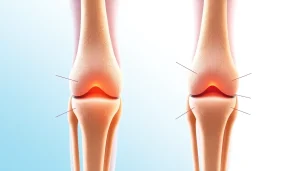Navigating the Complexities of VDAP: Essential Insights for Nurses in Alabama

Understanding the VDAP Program
What is VDAP?
The Voluntary Disciplinary Alternative Program (VDAP) is an initiative specifically designed for nurses in the State of Alabama who are struggling with issues related to substance use or mental health. It serves as an alternative to formal disciplinary actions taken by the Alabama Board of Nursing, providing a path for nurses to seek help before more severe consequences occur. The program emphasizes early identification, intervention, and treatment while ensuring that participants receive the necessary support to continue their professional journey. More than a rehabilitation program, VDAP works to address underlying challenges faced by nurses, directly aiming to protect their careers and the integrity of the nursing profession. For detailed insights, one can refer to the official VDAP information available through various health and legal channels, including the VDAP resource page.
Who is Eligible for VDAP?
Eligibility for the VDAP is primarily targeted towards licensed nurses in Alabama who voluntarily admit to substance use or mental health issues that may impair their ability to practice safely. This program is not meant for individuals who are under investigation for misconduct related to patient safety or have already faced disciplinary measures. To qualify for VDAP, nurses must accept responsibility for their actions and demonstrate a genuine commitment to seeking help. This proactive stance is crucial, as it indicates their willingness to engage in the recovery process and reclaim their professional identity as a responsible practitioner. The confidentiality of participants is also a focal point of the program, aiming to create a safe space for those in need without the fear of public repercussions.
The Benefits and Risks of VDAP
Joining the VDAP can come with significant benefits for nurses needing assistance. One of the most pressing benefits is the opportunity to receive treatment for issues that, if left unchecked, could jeopardize not only their careers but also patient safety. By engaging with the program, nurses can work towards long-term recovery while maintaining their licenses, provided they adhere to the program’s requirements.
However, the VDAP is not without its risks. Participants are held to strict standards, and failure to meet these can lead to severe consequences, including losing their nursing license. Furthermore, the program’s structured environment may be perceived as rigid or overly punitive by some participants, potentially leading to feelings of resentment or frustration. Therefore, it’s paramount for potential candidates to thoroughly understand the program’s demands and weigh them against their personal circumstances and willingness to commit to recovery.
Challenges Faced by Nurses in VDAP
Common Misconceptions about VDAP
Despite the supportive nature of the VDAP, several misconceptions often cloud the perception of the program. One prevalent myth is that entering VDAP equates to an admission of incompetence. On the contrary, many advocates argue that seeking help demonstrates strength and accountability. Additionally, some may mistakenly believe that participation in the program guarantees immunity from disciplinary action. While it does offer a chance to mitigate consequences, it is not a blanket protection for all actions taken prior to entering the program. It’s essential for nurses considering VDAP to seek clarity on these points and understand the implications of their decisions.
Navigating Stigma and Support
Nurses entering the VDAP may encounter significant stigma from colleagues and the wider healthcare community. The perception of failure associated with substance abuse or mental health struggles can deter many from seeking the help they need. Effectively navigating this stigma requires a dual approach: building personal resilience and fostering supportive networks. Engaging with professional organizations and peer support groups can create a community of understanding and encouragement, which is vital for nurses on the road to recovery. Furthermore, open discussions about the challenges associated with VDAP can help normalize seeking assistance, encouraging others to consider their options without fear of being judged.
Legal Implications of Entering VDAP
Entering the VDAP involves various legal considerations. It’s crucial for nurses to understand that while the program offers an alternative to traditional disciplinary actions, it also entails a legal agreement that binds participants to specific conditions. For instance, nurses may be required to undergo regular drug testing, counseling, and monitoring, and failure to comply with these requirements can lead to legal repercussions, including the loss of their nursing license. Additionally, any information shared during the program may not remain confidential if safety or legal issues arise. Therefore, legal counsel is often recommended to navigate the complexities of the program without compromising one’s rights.
Steps to Enter VDAP Safely
Preparing for VDAP Involvement
Preparation is key to entering the VDAP successfully. Nurses should begin by conducting thorough self-assessments to determine their readiness for the commitment involved in the program. This includes acknowledging personal challenges and being open to the necessary changes for recovery. Moreover, gathering information about the program and its requirements can help demystify the process. Understanding what to expect allows nurses to mentally prepare themselves, reducing anxiety associated with the unknown.
Choosing the Right Legal Representation
Because entering VDAP involves legal ramifications, choosing the right legal representation is crucial. Nurses should seek attorneys who specialize in nursing law, particularly those who have experience with VDAP cases. This legal expert can provide insights into the program’s intricacies and help ensure that the nurse’s rights are protected throughout the process. Additionally, a knowledgeable lawyer can assist in negotiating potential terms of the program, ensuring fair treatment without jeopardizing the nurse’s future.
Understanding Program Requirements
Before entering VDAP, nurses must have a clear understanding of all program requirements. This includes the expected duration of participation, the frequency of required evaluations and drug tests, and any courses or treatment plans participants need to complete. Thorough knowledge of these stipulations allows nurses to engage fully without surprises down the line. It’s also beneficial to maintain open lines of communication with program coordinators to address any concerns as they arise. Furthermore, understanding the consequences of non-compliance is essential for ensuring adherence to the program.
Success Stories from VDAP Participants
Case Study: Overcoming Obstacles
Numerous case studies illustrate the potential for recovery and success through the VDAP. One notable example is a nurse who, after entering the program for alcohol dependency, transformed her life from one of despair to empowerment. With the support of counseling, peer groups, and strict adherence to program requirements, she regained not only her professional standing but also her personal life. This transformation highlights the importance of viewing VDAP as an opportunity for growth rather than a punitive measure.
The Role of Support Networks
Support networks play a pivotal role in the success of nurses involved in VDAP. Whether from family, friends, or fellow healthcare workers, emotional and practical support can make a significant difference in overcoming challenges. Networks provide encouragement, accountability, and resources that empower participants to stay committed to their recovery plans. Engaging with alumni of VDAP can also be beneficial, as these individuals can share their experiences and strategies for success.
Long-term Outcomes for Nurses
Long-term outcomes for nurses who successfully navigate VDAP can be exceptionally positive. Many report improved mental health overall, decreased reliance on substances, and a rekindled passion for their profession. Additionally, participation often instills a greater sense of empathy and understanding of the struggles faced by others in the profession, leading to enhanced patient care. Ultimately, successful completion of the program can lead to a fulfilling career path, underscoring the belief that recovery is possible and that with the right support, nurses can thrive in their roles.
Conclusion: Making an Informed Decision about VDAP
Key Takeaways
In summary, while the VDAP offers valuable resources for nurses facing substance use or mental health challenges, it is essential for potential participants to consider their circumstances carefully. Understanding both the benefits and risks associated with the program is crucial in making an informed decision. Nurses should engage in self-reflection, seek appropriate legal counsel, and prepare for the commitment that VDAP entails.
Resources for Further Assistance
A range of resources exists for nurses contemplating VDAP. Professional organizations often provide counseling services and support groups tailored for nurses. Additionally, legal resources can help individuals obtain comprehensive information about their rights and responsibilities within the program. Seeking out these resources can equip nurses with the tools they need for a successful recovery journey.
Final Thoughts on VDAP Participation
Deciding to enter VDAP is a significant step towards recovery and professional integrity. While challenges may arise, the support and structure the program offers can lead to a renewed sense of purpose and fulfillment within the nursing profession. Ultimately, individuals should approach this decision with a clear understanding of their requirements, benefits, and potential challenges while fostering a supportive network amidst their journey of healing.







